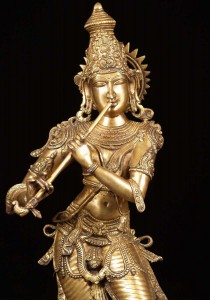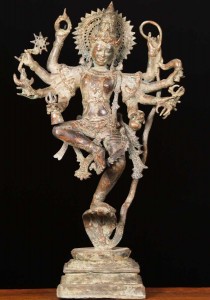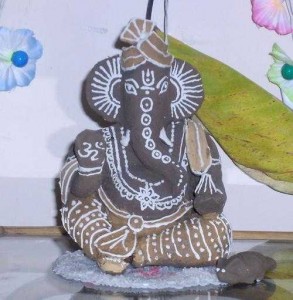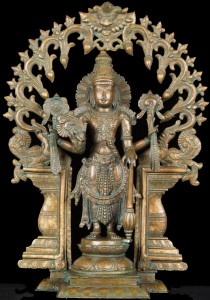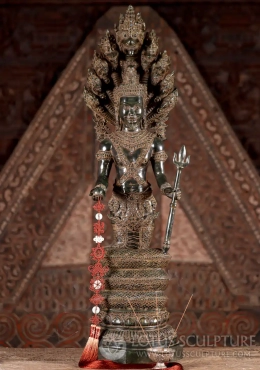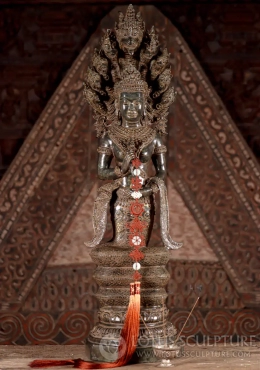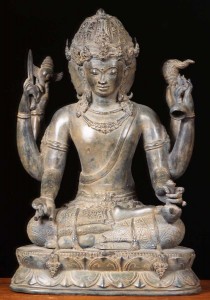
Dattatreya or Datta is considered by Hindus to be god who is an incarnation of the Divine Trinity, the three main Hindu Gods Brahma, Vishnu and Shiva. The word Datta means “Given”, Datta is called so because the divine trinity has “given” themselves in the form of a son to the sage couple Atri and Anasuya. He is the son of Atri, hence the name “Atreya.”
Dattatreya is recognized as an Avatar or incarnation of the Lord Shiva and as the Adi-Guru (First Teacher) of the Adinath Sampradaya of the Nathas. Although Dattatreya was at first a “Lord of Yoga” exhibiting distinctly Tantric traits, he was adapted and assimilated into the more devotional Vaishnavite cults; while still worshiped by millions of Hindus, he is approached as a benevolent god and a teacher of the highest essence of Indian thought.
In sculpture Dattatreya statues have some distinct characteristics. He always has three faces, one for Shiva, Vishnu and Brahma. Vishnu faces forward with Shiva on the left of Vishnu and Brahma on the right. He has six hands where he holds a drum (damru), discus (chakra), conch shell (sank), japa mala, water vessel (kamandala) and a trident (trishul). All these attributes of the Lord have their esoteric meanings. The trident is used for killing the ego, and the drum is used to awaken those souls who are still sleeping in the slumber of ignorance. Lord Datta’s conch shell is used to make the sacred sound OM. Lord Dattatreya is also holding a rotating discus -chakra. It is a round circle with no beginning and no end. Like the universe, it too is constantly moving, always in a flux. He uses this chakra to destroy all kinds of karmic bonds of His devotees. His right hand holds a rosary -japa mala. With this the Lord counts His devotees, liberating them by merely thinking of their name. In another hand the Lord is carrying the water pot -kamandala. This holds the nectar of pure wisdom. With this He revives the souls thirsty for knowledge, liberating them from the endless cycle of life and death.
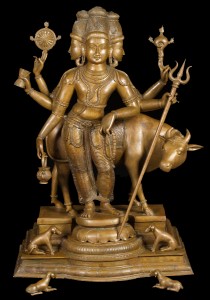
Accompanying Dattatreya are 4 dogs and a cow. The four dogs surrounding Datta represent the four Vedas. The dogs are both wild and tame and symbols of fidelity and devotion. The cow is Kamadhenu the gift giving cow. She grants all wishes and desires. She is the cow of plenty, which emerged from SAMUDRAMANTHAN (the churning of the ocean) and and was claimed by Indra as his property. She is the mother of all cows.

